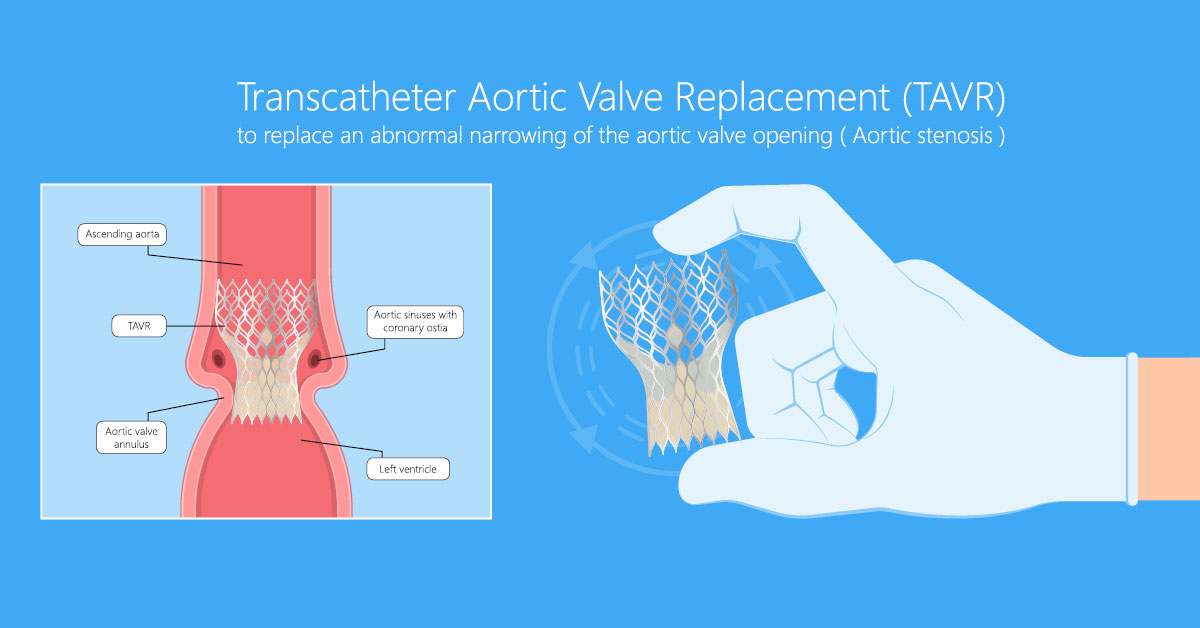Transcatheter Aortic Valve Replacement (TAVR)

If you’ve been diagnosed with severe aortic stenosis, your doctor at Oklahoma Heart Hospital may have recommended a treatment called TAVR, or transcatheter aortic valve replacement. Problems with your heart valves that require surgery may be somewhat scary, but OHH has vast experience with the best treatments available, including TAVR.
What is TAVR?
Transcatheter aortic valve replacement is a minimally invasive procedure to replace a diseased aortic valve. Aortic stenosis involves a narrow, stiff aortic valve that no longer allows blood to flow through the heart properly, which means the heart must work harder than usual to pump blood. In patients with severe aortic stenosis, valve replacement is recommended.
Until 2008, valve replacement meant open heart surgery, but the TAVR procedure has changed this for many patients. Rather than an open heart surgery, a replacement valve is inserted using a catheter, in much the same way a stent is placed in the heart. The catheter is threaded through the femoral artery or through a small incision in the chest into the heart. Once the replacement valve is delivered through the catheter, it is expanded and takes the place of the damaged valve. Although some patients still require open heart surgery, this less invasive option is now the preferred treatment.
Why is TAVR the preferred treatment?
While both TAVR and open heart surgery can result in improved heart function, the process is much shorter and easier with TAVR. In open heart surgery, the breastbone is opened to allow access to the heart. The patient must be put on a bypass machine while the heart is stopped so doctors can replace the valve. In contrast, TAVR creates a several-inch incision that does not traumatize the body as deeply. The heart is not stopped, and the original valve is left in place but pushed aside by the replacement. All of these factors lead to less overall risk of complications.
After the procedure, the recovery period is much shorter and easier than that of open heart surgery. Time spent in hospital is reduced from seven to 10 days for open heart surgeries to three to four days for TAVR. After coming home, you will find yourself back to your usual routine in a shorter timeframe than the months-long recovery of open heart surgery.
What are the risks of TAVR?
While TAVR is the preferred method of treating severe aortic stenosis, it is still a major medical procedure, and there are some risks involved. Overall, TAVR is considered a safe and effective treatment.
The most notable risks involve blood vessel damage and an increased risk of stroke. Inserting a catheter through your vessels carries a slight risk of damaging the vessel. If damage occurs, your doctor will work to correct the damaged vessel. Perhaps the biggest risk is stroke, particularly in the days immediately following surgery. Your doctor and nurses will explain the risks, the signs and symptoms of a stroke, and what to do if any of these occur.
At OHH, we have used TAVR to save many lives. Our expert team of doctors and nation-leading facilities have the experience needed to treat your aortic stenosis safely and effectively.
